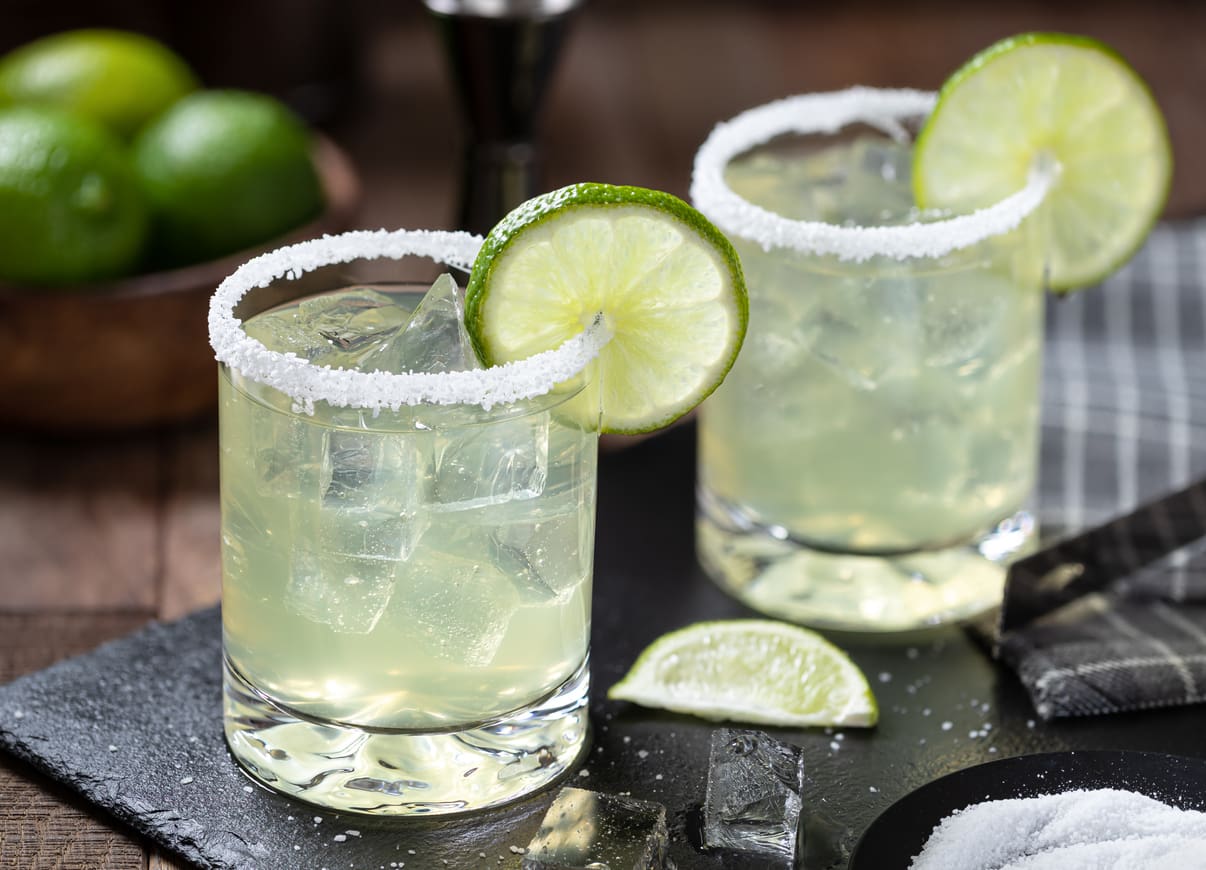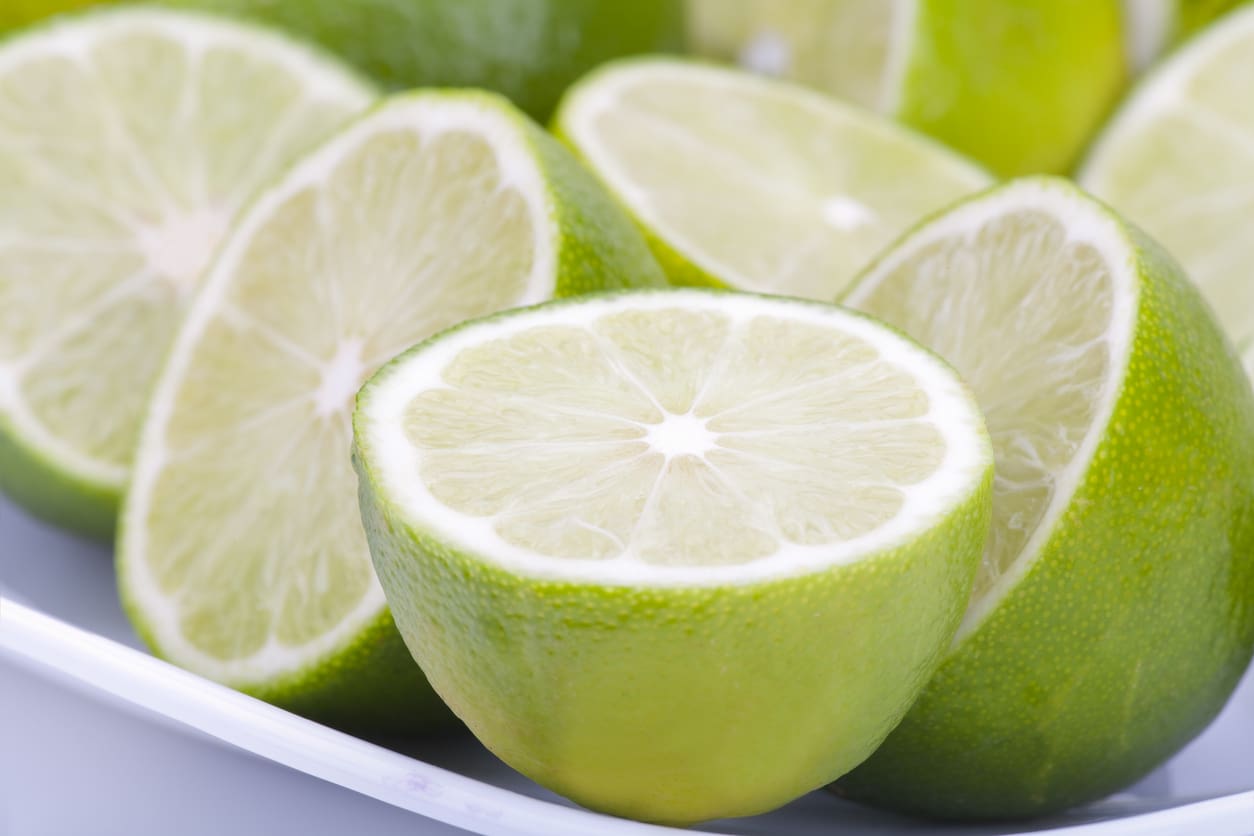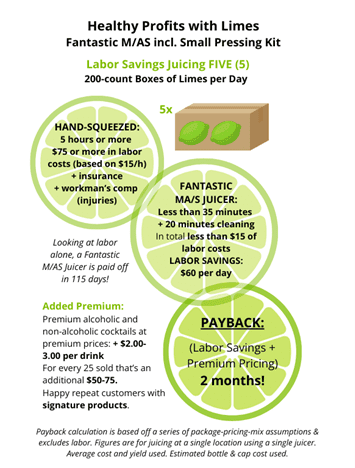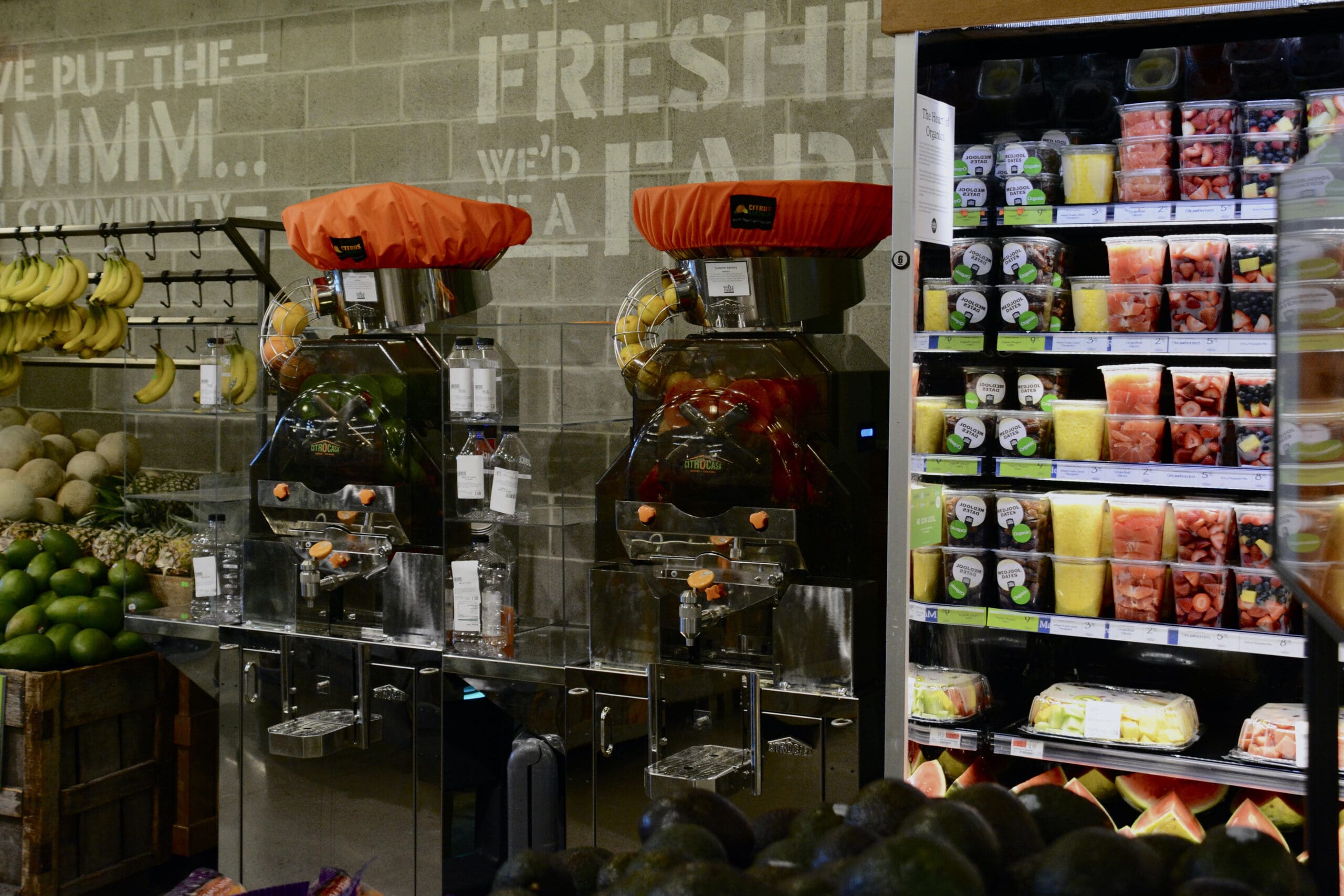We may not know for sure who invented it, but we do know that the Margarita is America’s most wanted cocktail, attracting more than a fifth of all cocktail sales. Learn more about this iconic beverage and the one ingredient that makes all the difference.
CONTENT:
- Who invented the Margarita?
- Is the Margarita named after a woman or a flower?
- Is a Margarita the same as a Picador?
- How many Margaritas do Americans consume?
- What makes the Margarita so special?
- What’s in a Classic Margarita?
- What’s the most important ingredient in a Margarita?
- What’s the best way to make fresh lime juice?
- How can I change up the Classic Margarita recipe to create signature variations?
- What’s the payback on a commercial juicer?
- Who makes the best Margaritas in the US?
- Summary

WHO INVENTED THE MARGARITA?
The invention of the Margarita cocktail is shrouded in mystery, with several stories vying for authenticity.
The cocktail has been around for quite some time, with all stories dating back to the 1930s and 40s. One popular tale credits Dallas socialite Margarita Sames, who supposedly concocted the drink in 1948 at her Acapulco vacation home. Another version attributes the creation to Carlos "Danny" Herrera, who allegedly invented the Margarita at his Tijuana restaurant in 1938 for a picky dancer named Marjorie King, who was allergic to all spirits except tequila. Then there is the story of Francisco "Pancho" Morales, who claimed to have mixed the first Margarita in 1942 at Tommy's Place in Juárez, Mexico. Yet another claim involves Enrique Bastate Gutierrez, who supposedly crafted the cocktail in the early 1940s in honor of actress Rita Hayworth, born Margarita Cansino.
A story that intrigued us and is convincing is the one told by Simon Difford in Difford’s Guide. It also answers the question whether the cocktail’s name refers to a woman or a flower.
IS THE MARGARITA NAMED AFTER A WOMAN OR A FLOWER?
According to Difford’s Guide, it’s probable that the Margarita cocktail is simply a tequila-based Daisy that came about by accident. The Daisy is a cocktail category that was popular in the early 20th century, during Prohibition. Cocktails in that family were made with citrus juice, sweetened with syrup or a liqueur, and fortified with a base spirit.
As Difford describes in his article on the history of the Margarita, the first specific mention of a Tequila Daisy appeared in the Moville Mail on 23rd July 1936, a newspaper published in Moville, Iowa, from 1887-1943 by James Graham.
Graham visited a bar in Tijuana run by an Irishman called Henry Madden. The bar had been given the name “The Home of the Famous Tequila Daisy”, based on one of its popular beverage inventions. In a conversation with Graham, Madden clarified that it was not an “invention”, but rather a mistake. When he was mixing a drink for a customer, he accidently grabbed the wrong bottle. The customer, however, didn’t mind – on the contrary. He enjoyed the tequila drink so much that he called for another. And that was the beginning of the cocktail’s success story.
Margarita, by the way, is the Spanish word for “daisy”. Following this story, the Margarita is named after a flower.
The first documented use of the name Margarita, according to Difford, was in the September 17, 1953 edition of The Press Democrat, a Santa Rosa, California newspaper.
IS A MARGARITA THE SAME AS A PICADOR?
Difford’s Guide mentions another drink that appeared right around the same time in the literature: the Picador.
The first mention of the Picador was in a British source, “The Café Royal Cocktail Book”, published in 1937 by William J. Tarling. Tarling, head bartender at the Regent Street’s Café Royal and president at the United Kingdom Bartenders Guild, had compiled this recipe book of more than 4000 classics alongside some new not so well-known recipes. The guide, even though only printed in small number, was the go-to reference for cocktails developed in the 1920s and 30s.
One of the cocktails mentioned in that source was the Picador. It used tequila, Cointreau, and lime juice in almost the same measurements as a Margarita. Tarling, however, suggested that the cocktail could be made with either lemon or lime juice.
So, the Picador and the Margarita are similar – but not the same. A Classic Margarita uses lime. Lemon juice is not an option. In addition, the Picador is not served in a salt-rimmed glass.

HOW MANY MARGARITAS DO AMERICANS CONSUME?
It is possible, and likely, that the cocktail cannot be traced back to a single source or inventor but that it has several origins so close in time and place that we cannot name the true one. In the end, the details of who first mixed it may not be that important for a drink that has clearly stood the test of time and become a cocktail icon. As Al Sotack says in Epicurious, “Yet, occasionally, a drink is so big, so important that it transcends its contradictory legends and downright disinformation. The margarita is one of those drinks; it has become bigger than the details.”
Today, the Margarita is truly the biggest cocktail in the US and one of the biggest ones in the world.
US consumers love cocktails. According to CGA’s Cocktail Sales Tracker, cocktails continue to increase in popularity. The tracker showed 5% year-on-year increase in the total cocktail value velocity in the last quarter of 2023.
The Margarita takes first place and is the most ordered-on-premise cocktail in the US, followed by the Martini and the Moscow Mule. One fifth of all cocktail sales come from Margaritas.
An interesting side note for citrus lovers: The Mimosa, made with sparkling wine and freshly squeezed orange juice, comes in 9th place, but is the ruler of all drinking that takes place in the first half of the day.
Another interesting fact in this context is that 85% of the world’s tequila is consumed in the US and Mexico, with both US and global tequila volumes set to rise over the coming years. In the US, tequila sales reached an all-time high in 2023, exceeding 31.5 million 9-liter cases sold. Margaritas surely play a role in that.
WHAT MAKES THE MARGARITA COCKTAIL SO SPECIAL?
In our opinion, there are a several reasons why the iconic tequila cocktail has reached such a level of popularity:
- Flavor. The Margarita’s flavor profile is appealing, because it combines sweet, salty, bitter and sour in just the right way. With one drink, you access four of the five tastes we register as humans. Flavor is made up of taste and aroma. The right ingredients are key in achieving the best flavor (we’ll talk more about the hero ingredient that drives aroma and taste further down in this blog.
- Versatility. No doubt, a Margarita is the perfect cocktail to complement Mexican delicacies, such as fajitas, tacos, or quesadillas. It is, however, extremely food-friendly and pairs well with almost all meals. Margaritas are also perfect for any occasion – it’s never the wrong drink to order or serve. As far as seasons are concerned, Margaritas taste delicious year-round. That’s why it isn’t just the most popular cocktail in many warm weather states, such as Texas and Florida, but it also ranks number one in states that have long periods of cold weather, such as Illinois and Michigan.
- Borderless. In our opinion, another aspect that makes the Margarita special is the fact that it transcends social divides. You can order a Margarita in a dive bar and in an upscale venue – and in all the different restaurants and bars in between.
- Simplicity. There is something special about its simplicity. No crazy ingredients, no fancy process, just simple and straightforward pleasure derived from four ingredients.
WHAT’S IN A CLASSIC MARGARITA?
A Classic Margarita has just four ingredients:
- Tequila. Most recipes call for Silver or Blanco.
- Fresh lime juice: Only ever freshly squeezed (see below).
- Orange liqueur: Triple Sec, Curaçao, Cointreau, or Grand Marnier
- Coarse salt: Avoid fine table salt.
The three liquid ingredients follow the formula 3 – 2 – 1:
3 parts tequila, 2 parts lime juice, and 1 part orange liqueur.
- Rim a large cocktail glass by rubbing the rim with the lime wedge and dipping it into a saucer of coarse salt. The salt used in a Margarita has the same purpose it has in food. It’s a flavor enhancer. It works well to mellow the lime juice and gives the cocktail balance.
- Combine the tequila, orange liqueur, and fresh lime juice in a cocktail shaker with ice. Shake it well and strain it into the chilled, salt-rimmed glass.
- Enjoy!
WHAT’S THE MOST IMPORTANT INGREDIENT IN A MARGARITA?

Fresh lime juice. Period.
You can have high-quality tequila and expensive triple sec, but if you add processed lime juice from a bottle, or a pre-mixed Margarita mix, the result will only be second-rate.
Fresh lime juice makes the difference between a mediocre and a great Margarita due to the incredibly complex aroma combined with the natural taste.
We agree with Al Sotack in the above article when he says that fresh lime juice is the “underappreciated hero” in the Margarita. Fresh lime juice will lift your Margarita to the next level – and turn it into a premium product. Give it a try!
WHAT’S THE BEST WAY TO MAKE FRESH LIME JUICE?

We already determined that fresh lime juice will make or break your Classic Margarita – and the many variations of it (look below for some suggestions).
The best way to make fresh lime juice depends on the volume you need. For home use, a handheld citrus squeezer will do.
For bars, restaurants, and event venues, we recommend a commercial citrus juicer. An automated citrus juicer has several advantages that make the initial investment worthwhile:
- Speed. It will make juicing a lot faster. On a Citrocasa Fantastic juicer you can juice 30 fruit per minute. It only takes 4 or 6 minutes to juice an entire box of limes, depending on fruit size.
- Efficiency and Labor Savings. Due to the high juicing speeds and fast clean-up, you can free up your staff to do other value-added tasks. Reduce manual labor while increasing quality with no need to spend hours hand-squeezing.
- Reliability and Consistency. A reliable commercial juice machine does not take vacation and does not call out sick. Any colleague can do a brief training and be a highly productive citrus squeezer.
- Safety. An automatic juicer will make juicing a lot safer. Due to the absence of repetitive movements and the removed danger of handling sharp knives, you can reduce injuries and costly absences that result from them.
- Employee Satisfaction. Let’s face it, manually squeezing a lot of limes is a daunting task that few employees enjoy. Using a highly efficient and easy-to-operate lime juicer makes the job easy and fun.
- Quality and Taste. Few will oppose the fact that fresh juice tastes better than processed juice out of a bottle. But there are quality differences between fresh juices as well, depending on the equipment you use. Citrocasa juicers have a patented moving knife that doesn’t squash the fruit or tear the peel. This minimizes the bitter oils in the juice, giving you even better Margaritas.
- You can use a Citrocasa Fantastic juicer for a wide range of citrus and create many different cocktails and non-alcoholic beverages for your customers. Juice limes, of course, but you can also juice oranges, tangerines, and lemons for many different alcoholic and non-alcoholic beverages.
Click HERE to learn more about squeezing limes for your bar or restaurant.
HOW CAN I CHANGE UP THE CLASSIC MARGARITA RECIPE FOR SIGNATURE VARIATIONS?
Here are a few inspirations for how you can change up the Classic Margarita recipe.
- Spice it up: Jalapeño Infused Margarita
You can make the Classic Margarita spicey by infusing the tequila. Delish has a great recipe for using jalapeños and cucumbers. Infusing alcohol simple: Cut up a jalapeño and muddle it in the tequila. Add some cucumber slices. Let everything steep in a sealed jar for 8 to 12 hours. After that, strain the tequila and discard the solids. Use it to spice up your Classic Margarita.
- Slim it down: Skinny Margarita
A slimmer version of the classic Margarita is the Skinny Margarita. Instead of the orange liqueur, you can use freshly squeezed orange juice and a bit of agave. Not only are these Margaritas lower in calories, but also a little bit lower in alcohol.
- Make it bubbly: Champagne Margarita
This is a great cocktail for festive occasions. Simply prepare a Classic Margarita, pour it into a tall cocktail glass and top it off with Champagne. Cava or Prosecco are great alternatives as well.
- Make it tropical: Pineapple Margarita
For this recipe, you will need fresh, unsweetened pineapple juice. We recommend using the same amount as tequila. The pineapple juice is added to the shaker and shaken with the rest of the liquid ingredients. Garnish this delicious drink with a pineapple wedge for effect.
- Combine the best: Mimosa Margarita
This is a delicious combo of two favorite cocktails. Add freshly squeezed orange juice, in the same ratio as tequila, to the rest of the ingredients and stir everything well. Pour it into tall cocktail or champagne glasses and top the mixture off with Champagne. Cava and Prosecco are great alternatives as well.
WHAT IS THE PAYBACK ON A COMMERCIAL JUICER?
You will be surprised to see how short the payback time is on a Citrocasa juicer. Check out the graph below to see why the investment makes absolute sense, even if you are a small operation. Juicing limes is super easy with a commercial juice machine designed to squeeze limes that’s also an orange juice machine. In addition to the high-quality lime juice and labor savings, you can also use the juicer for making fresh orange juice and freshly squeezed lemonade, which makes the payback on your Citrocasa juicer even faster.

WHO MAKES THE BEST MARGARITAS IN THE US?
We have many clients across the US who make fabulous Margaritas. In our opinion, there is no one best Margarita – but we know one thing for sure: the best Margaritas use high quality ingredients and that includes freshly squeezed lime juice. Lime juice is the hero.
Contact us to find out more about how our juicing equipment can help you develop signature craft cocktails to serve your customers an outstanding experience.
SUMMARY:
- Who invented the Margarita?
Even though there is no shortage of stories about the cocktail’s invention, the truth remains elusive. - Are Margaritas popular?
Americans love Margaritas. It is the most ordered cocktail in the US. - What’s in a Classic Margarita?
3 parts tequila, 2 parts fresh lime juice, 1 part orange liqueur – and some coarse salt for the rim of the glass. It’s that simple. - Do you need fresh lime juice to make a Margarita?
Absolutely yes. Lime is the key ingredient, the hero that decides whether your cocktail is mediocre or great. - For foodservice venues, what is the best way to make lime juice?
Invest in a commercial juicer. It is efficient and has many benefits. With a high-quality juicer, the payback period is extremely short due to labor savings. - What’s the secret ingredient for a great margarita?
Using freshly squeezed lime juice is the best way to make an amazing margarita as well as using your favorite high-quality tequila and a quality orange liquor or triple-sec. Finally, a properly salt-rimmed glass help compliment the overall flavor profile and presentation. - What’s the perfect Margarita?
The perfect Margarita is one made with freshly squeezed lime juice.
Contact us to find out more.
About Citrus America – Citrus America has been driving innovation and quality in the juicing segment for more than a decade in North America and the Caribbean. We’re the exclusive master distributor for Citrocasa and have driven many innovations and quality improvements in juicing equipment. In addition to equipment solutions, we provide tailored training and support strategies to help our customers earn Healthy Profits.
About Citrocasa – Citrocasa has been the pioneer in producing the most innovative and highest quality food grade stainless steel commercial citrus juicing equipment to the grocery, hotel, and restaurant since 2005 across Europe. The Citrocasa 8000 Series was launched in 2005, with the 8000XB and the 8000SB. The 8000SB-ATS was launched in 2013. The Citrocasa Fantastic Series was launched in 2010 with the Fantastic M/AS. The Fantastic F/SB followed in 2011. Between 2015 and today, Citrocasa has launched the Advance upgrades, The Revolution, The Eco, and has added new options for on-line connectivity continuing its role as being the leader in commercial citrus juicing quality and innovation.










